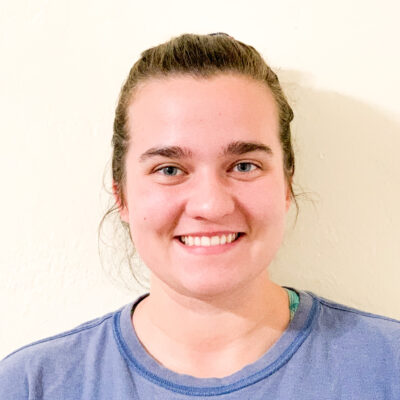
Hello, my name is Meghan Doyle and I am a senior at the University of Miami, majoring in marine science and biology, as well as a volunteer in the Foram Lab. During my time as a lab assistant, I have prepared sediment samples for analysis, picked through prepared samples for foraminifera (known as forams), and mounted collected forams to observation slides for further identification. In today’s guest blog, I’m going to tell you about the process I use to pick forams, which we are using to assess the health of coral reefs over the past few centuries (for more on how we do that, check out our Protist Prophets project).
I reached out to volunteer with the Foram Lab after hearing about the outreach component of the Protist Prophets project. In collaboration with the Khaled bin Sultan Living Oceans Foundation and the Black Girls Dive Foundation, the project uses scientific data to supplement an interdisciplinary educational curriculum that will provide current and real-world marine science information to middle and high schoolers. This aspect of the project stuck out to me because, as a high schooler, I was able to participate in a research-based marine science program. That opportunity has undoubtedly led me to where I am today, studying marine science at the University of Miami. I was thrilled to contribute to a project that could spread that opportunity and inspire other students to pursue marine science research as I had.
My role within the Protist Prophet project is to organize and prepare the sediment samples collected in the Global Reef Expedition (GRE) to be picked through to find forams. This is a crucial multi-step process that needs to be done before the samples are analyzed. The sample preparation process includes four tasks:
Step 1: Filter through field samples by grain size and depth
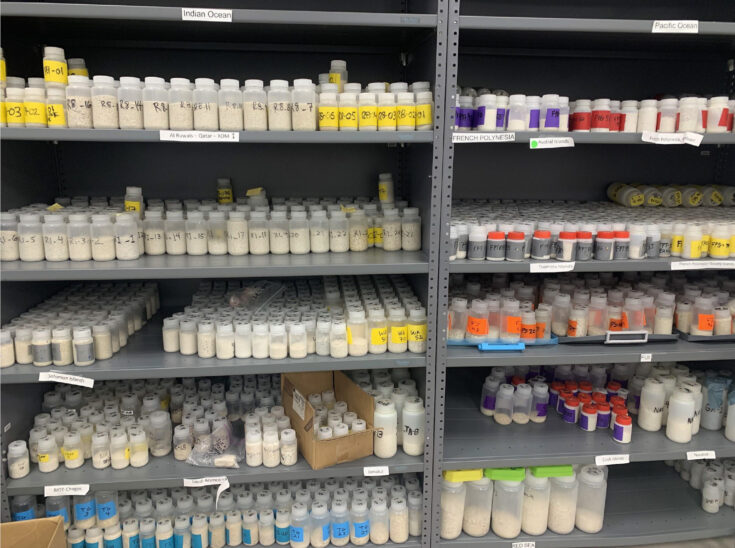
For the first step, I identify which field samples were collected from depths shallower than 15 meters, and have the target grain size of 2mm-125μm. This range encompasses the average size of most species of forams, which is why we specifically look through samples within this grain size. Samples with smaller grain sizes likely will not have many forams in them.
To identify the grain size range of our samples, we use a Camsizer, a machine that digitally measures the percent composition of each field sample by grain size. I look through and analyze these pre-existing Camsizer data to compile a list of sediment samples that match the target depth and grain size for further processing.
Step 2: Split the bulk samples from the Coral Reef Expedition field collection into sub-samples
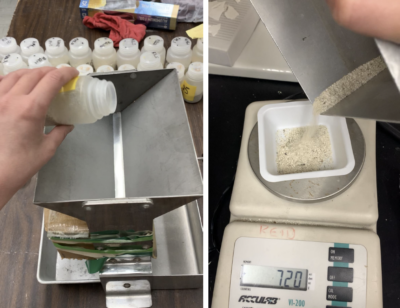
For the second step, I use a sediment splitter to cut our large field samples down to a more usable 10 gram weight for the purposes of our project. To do this, I pour the entire field sample into the splitter, which evenly halves the sample. I keep half to split again and return the other half to the field sample bottle. I repeat this process until I have 10 grams, which I weigh out and store in sample bags for further processing.
Step 3: Wet sieve the sub-samples
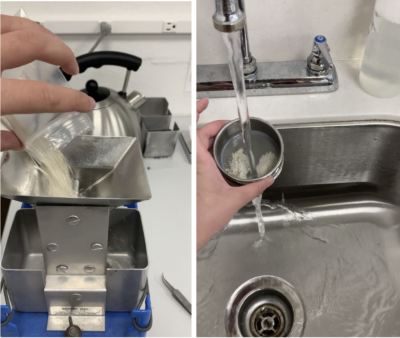
I wet sieve half of the 10 gram sub-sample with a 125μm mesh sieve and set it aside to bring to the oven, and save the other half in the sample bag as a backup if the sieved half does not reach the 3 grams required for the sample to be ready to pick. This step is performed to both condense our samples to a smaller size, and to rid them of smaller, silty sediment particles that likely contain foram fragments and juveniles that are difficult to identify.
Step 4: Dry and weigh out 3 gram samples to pick through for benthic foraminifera
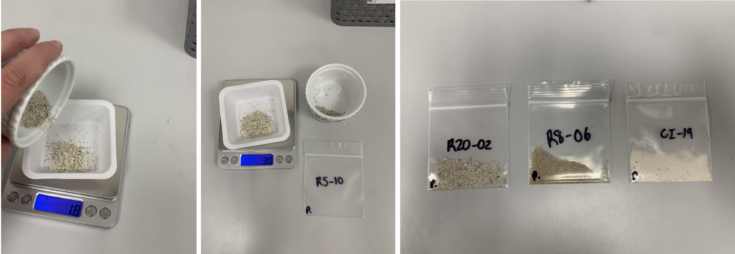
After splitting and wet sieving, the samples are baked in an oven at 40 degrees Celsius for at least 8 hours to rid them of excess water from the wet sieving. Then, I take the samples from the oven and weigh them out to the final 3 gram samples that other members of the lab use for picking.
Volunteering in the Foram Lab has been an invaluable experience that has provided me with hands-on research experience outside of my specific areas of study, taught me a new repertoire of experimental techniques, and allowed me to work with a phenomenal team of mentors and peers. I have loved learning from the Protist Prophets team and am excited to share with you details of the contributions I have made to this important line of research regarding coral reef health.
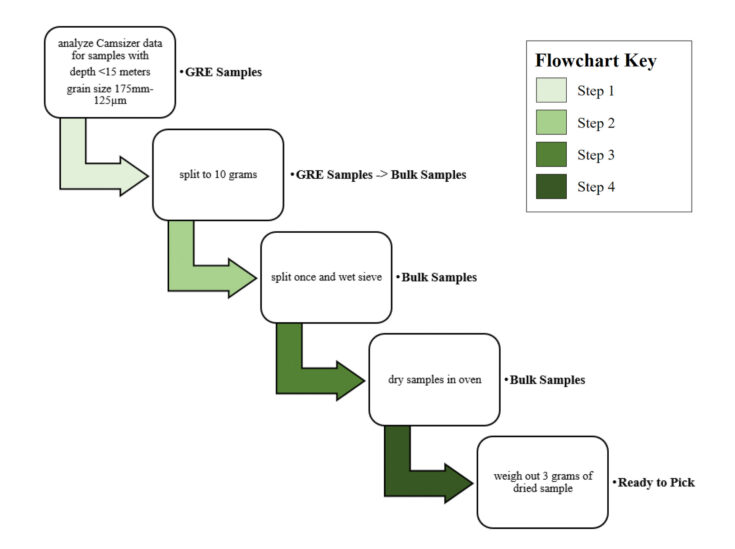
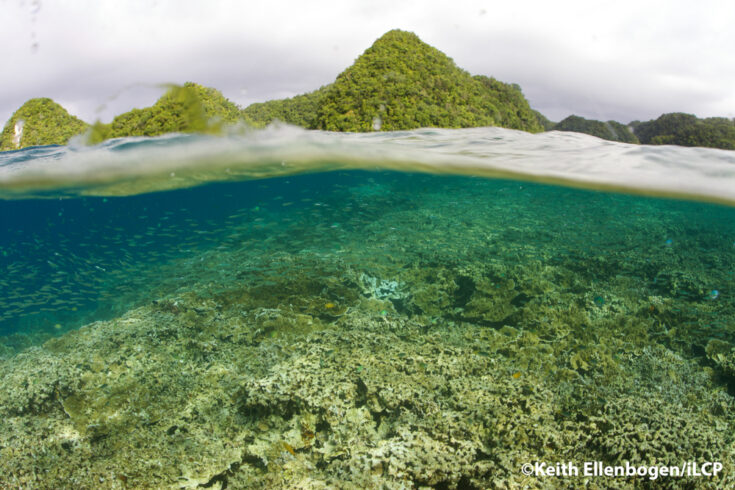
Protist Prophets
“Protist Prophets – Foraminifera as Global Bioindicators for Past and Present Coral Reef Health” is funded by National Science Foundation (NSF). It is taking a microscopic look at seabed samples collected on the Foundation’s Global Reef Expedition to assess the health of the coral reef environment over time.
